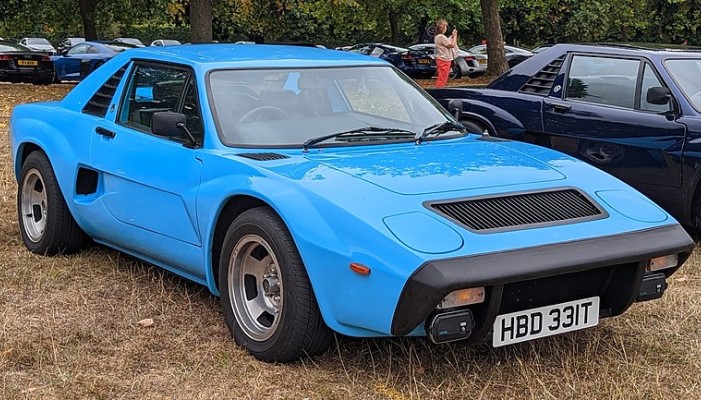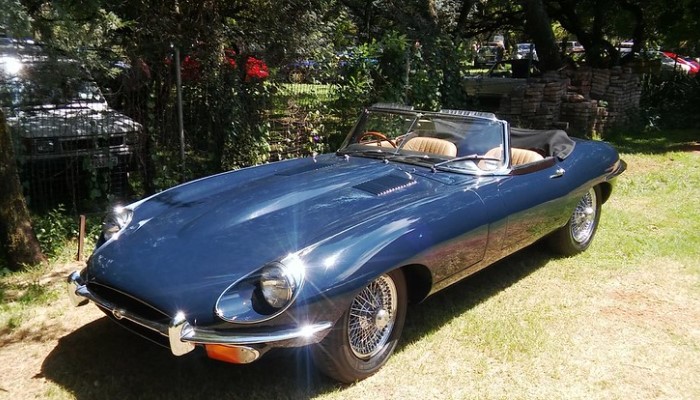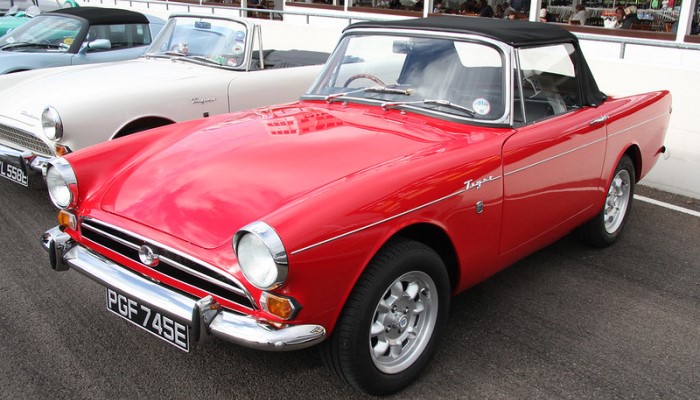AC Cobra
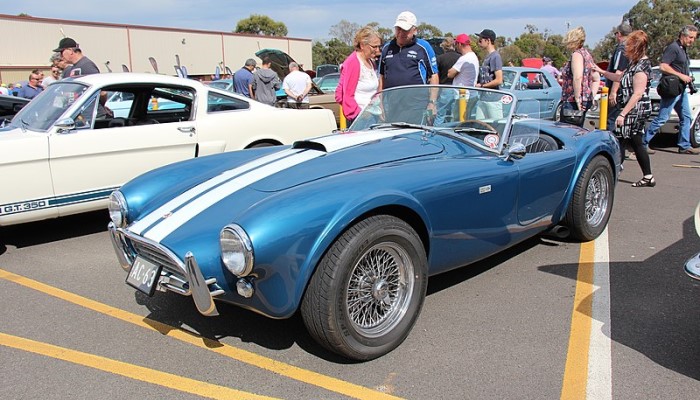
Photo: "File:1963 AC Cobra Mk II 289 CSX2105 (15594534106).jpg" by Sicnag
Exceptional Charisma
In December 1960, the American Carroll Shelby, who had just won the national championship, hung up his racing helmet on a nail. Heart disease, you can't help it: "during the last races I had to swallow nitroglycerin"...
During the war years, he was an Air Force instructor pilot, later engaged in cargo transportation and raising chickens; both seemed too boring to him, and in 1952, 29-year-old Shelby moved into motorsport.
The business went so well that after a couple of years he began to be invited to speak in Europe; in 1956, Sports Illustrated magazine named him the pilot of the year; and in 1959, he, in company with Roy Salvadori, won Le Mans in an Aston Martin. A victory worth all the rest put together.
"Now I had to start again from scratch" - he said to himself. Shelby's first step in a new life was the opening of a racing school. Then it dawned on him: If you can’t drive yourself, then why not start producing light and powerful sports cars for others?
The American auto industry did nothing of the kind in those years; the streets were littered with obese, huge road dreadnoughts, and amateur athletes could only rely on sports cars imported from Europe, which were usually either too expensive or not powerful enough.
Shelby's idea was as simple as an ax: to cross a light and durable European chassis with an inexpensive and powerful American "eight". In addition, he remembered the small, with a base of only 90 inches, English AC Ace, which came seventh in that triumphant Le Mans for him.
A Brief Overview of AC Company
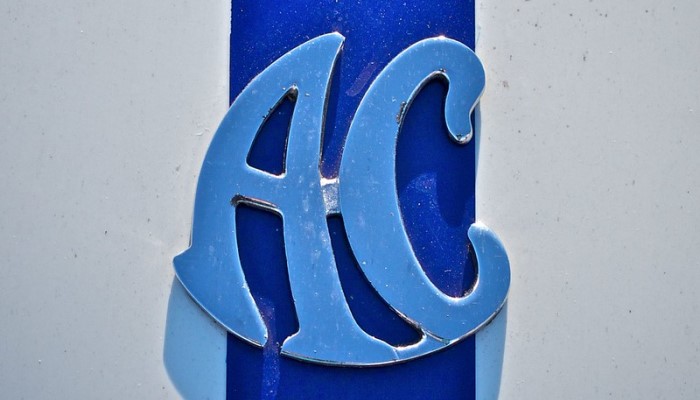
The small English company Autocar & Accessories, founded in 1900 by John Weller and John Portwine, gained fame thanks to the popular three-wheeled Autocarrier pickup truck with a single-cylinder engine. The partners even changed their company name to Auto Carriers Ltd., or AC for short.
After the First World War, in 1919, the AC Six passenger car with a 2-liter overhead valve aluminum 6-cylinder engine was presented at the London Motor Show. Its design turned out to be so successful that, with minor changes, the motor stayed in production until 1963. During this time, its power increased from 40 to 105 hp.
The company changed owners twice during the years of the Great Depression. Another unsuccessful attempt to pull AC out of the crisis was made by the new owners, the Hurlock brothers. In the early 1950s, the question of replacing the model arose.
It was based on a very well-proven sports car designed by John Tojeiro for racing driver Cliff Davis: a lightweight tubular chassis with independent wishbone suspension with transverse springs, a 6-cylinder Bristol engine (1.97 liters, 125 hp), and an open body, strongly reminiscent of the Ferrari Barchetta from the Touring of 1948.
The new AC Ace, introduced in 1953, made a lot of noise because it was the first English mass-produced sports car with fully independent suspension. At first, it was equipped with its own AC engine from the 1919 model; later, more powerful optional Bristols appeared, which raised the maximum speed of the Ace from 165 to 185 km/h.
Birth of the Cobra
It was on this model that Shelby laid eyes, starting, as he believes, the main business of his life. As a power unit, he used the new "compact" V8 from the Ford Fairlane. For Ford, this turned out to be a gift of fate; the company had just decided to seriously engage in motorsport but did not know how to approach it.
In October 1961, Shelby arranged for the supply of Ace chassis and bodies to the United States. Counting on a heavier and more powerful engine, the company had to strengthen the frame, suspension, and rear axle, increase the radiator, and provide disc brakes to all wheels; the original had "drums" at the back.
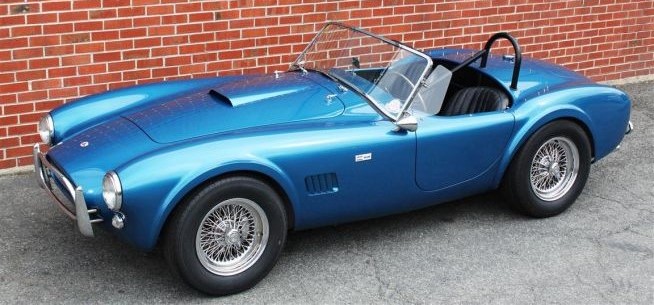
On February 2, 1962, the first roadster, later called the Cobra, arrived at a workshop in southern California. It took Shelby and his assistant less than eight hours to bring the Cobra to life by reassembling the engine and transmission and taking the car for its first test drive.
In April, the first Cobra, painted bright yellow, captivated the audience at the auto show in New York. Potential buyers were able to be convinced that the business was booming. To this end, the only copy was repainted in a different color every time the next magazine was taken to test it.
AC Cobra Development
Then everything went like clockwork: AC shipped its semi-finished products to California, where Shelby organized the final assembly. At the beginning of 1963, the production of similar machines for the European market began in England.
The first 75 cars received a 260 cu in (4.3-liter), 250-horsepower engine. It was replaced by a 4.7-liter engine, which corresponded to 289 cubic inches, hence the name of the model, Cobra 289. The new engine developed 271 hp in the standard version but could produce 370 hp in the most powerful sports version.
The 289, called the AC Cobra in England and the Ford Shelby Cobra in the US, was noisy and difficult to drive. But fast—almost 137 mph (220 kph). At that time, it was the most dynamic production car on the planet.
According to Sports Car Graphic magazine, the model was distinguished by explosive acceleration—3.9 seconds to 60 mph (96 kph). This fact was honored to be listed in the Guinness Book of Records.
In 1965, the 427 MkII, whose already 7-liter (427 cu in) Ford Galaxie engine developed 345 hp, received correspondingly wider tires. So I had to noticeably "inflate" the wings, which only added to the attractiveness of the already irresistible body. The speed of the second-generation Cobra has increased to 167 mph (269 kph).
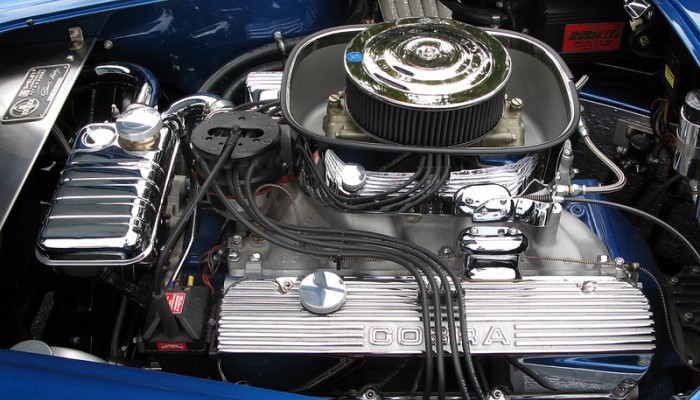
Photo: "AC Cobra engine" by Ruth and Dave
Sports Career
The beginning of the sports career of the Anglo-American hybrid was not very impressive. But modified with the participation of engineer and racer Ken Miles, the car quickly became one of the favorites of club races and then major international competitions.
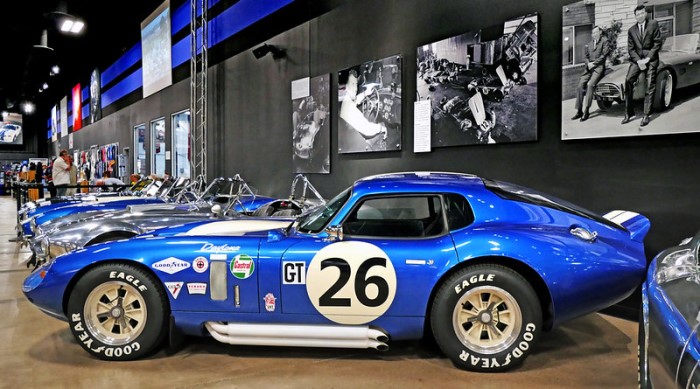
Especially for the many hours of endurance marathons, six closed-body coupes were built, called the Cobra Daytona. One of them finished fourth in Le Mans in 1964 and the first in his class (GT 5000), in which the brand was close to winning the world championship. A year later, Shelby's promise to "kick Ferrari's ass" came true; his cars took away the championship title from the Italians.
Production of the "real" Cobra ended in 1968 after 1,137 copies were produced. The strong charisma of the car has brought to life countless imitations in the form of replicas. The most reliable, assembled on original equipment, were offered by Autokraft.
As for AC, in the 1980s of the last century, it was divided between Ford and Autokraft. In 1996, the shares of the company were acquired by a certain Alan Lubinsky, who again launched into production two versions of the legend of the 60s: Mk II 289 and Mk III 427; they are made by hand at the AC factory and now, following the original technology, by advance orders.
What About the AC Cobra in Today's Market?
First things first, let's talk about the price tag. If you're expecting to pick up an AC Cobra for a bargain, you might want to think again. These babies don't come cheap.
With prices ranging from hundreds of thousands to millions of dollars, you might have to rob a few banks or sell a kidney to afford one. But hey, who needs a kidney when you can cruise down the highway in style, right?
But salvation is on the horizon. The AC Cobra Replicas are the salvation. Now, I know what you're thinking. "But replicas are just knock-offs, right?" Wrong! These babies are the real deal.
AC Cobra replicas are painstakingly crafted to look and feel just like the original. From the stunning exterior to the cozy interior, no detail is spared in these masterpieces. It's like owning a piece of history without having to sell your kidney.
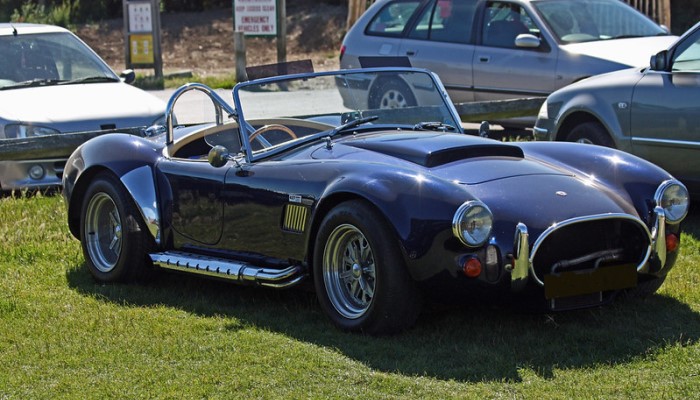
Photo: "Wonderful West Wittering - June 2011 - AC Cobra Replica Exterior" by Gareth1953 All Right Now
But the best part? The price tag. While the original AC Cobras can go for millions of dollars at auctions, replicas offer a more wallet-friendly alternative. You can find these beauties for a fraction of the cost, allowing you to fulfill your lifelong dream of cruising down the highway in style. The price range is quite wide. From $7,000 to $300,000.
The AC Cobra may not have the high-tech gadgets and gizmos of modern sports cars, but what it lacks in technology, it more than makes up for in raw horsepower.
With its thunderous V8 engine, this beast can go from 0 to 60mph in the blink of an eye. Just make sure you hold on tight to that steering wheel, or you might find yourself flying out of the car, leaving a trail of dust in your wake.
Of course, driving an AC Cobra isn't all sunshine and rainbows. When it comes to comfort, this car leaves a lot to be desired. Forget about cozy heated seats, climate control, or even a decent sound system. If you want luxury, go buy a limo. The AC Cobra is all about the thrill of the ride, not coddling your behind in plush leather seats.
Driving an AC Cobra is like being on a roller coaster - the adrenaline rush is addictive. Sure, your hair might be a mess and your neighbors might hate you for waking them up every morning, but it's a small price to pay for the sheer joy of driving this iconic car.
Well, the AC Cobra may not be the most practical choice in today's market, but if you're looking for a car that combines power, style, and a whole lot of fun, then this classic beauty might just be the one for you. Just make sure you budget for the occasional speeding ticket and invest in a good hat to tame that wild hair.

Unique Car Zone Team
A group of several fans of everything that moves on four wheels, a few article creators, a couple of marketing strategists, designers, web developers, and lots of coffee.




